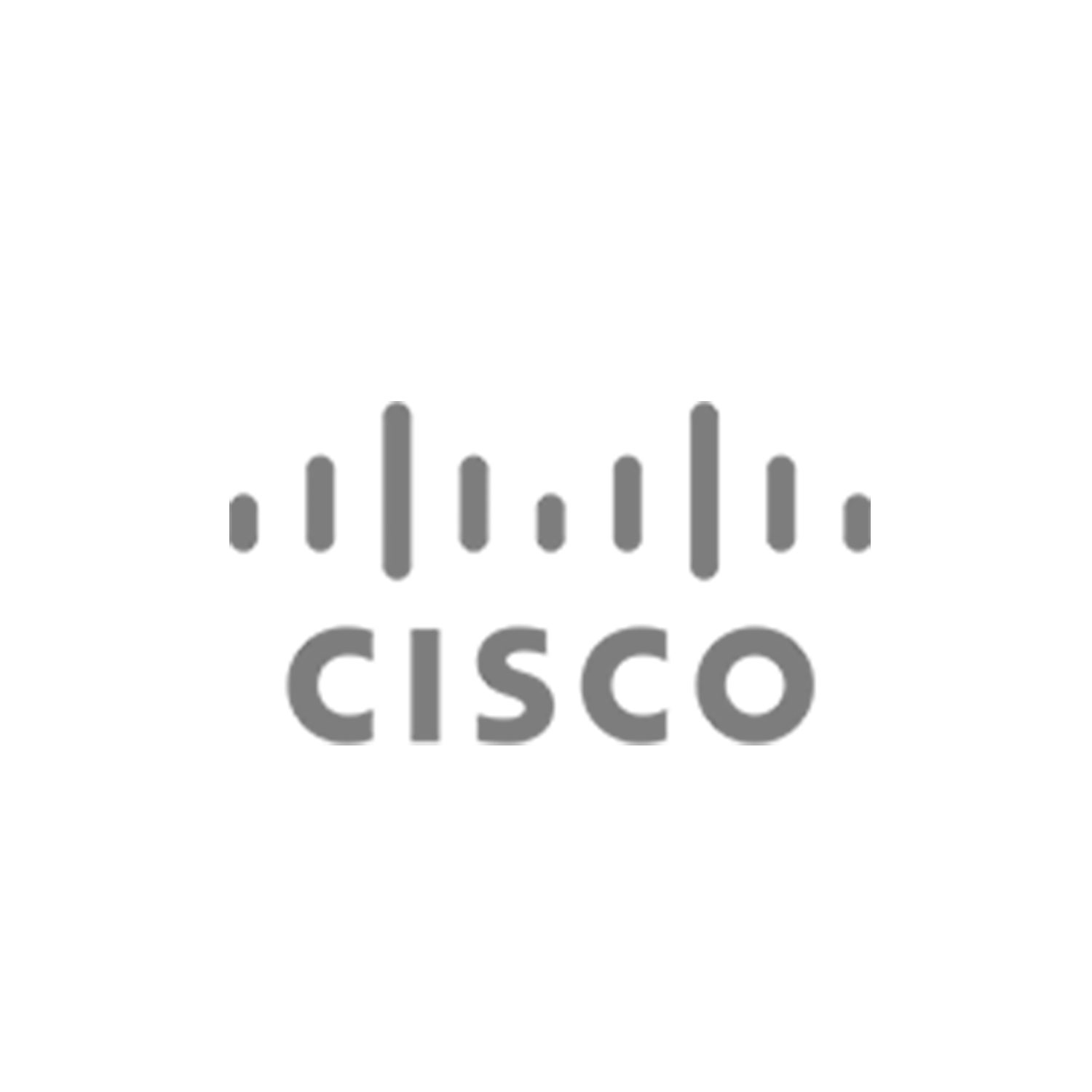Description
Features:
Live Instructor-led virtual training with hands-on lab practice
Deep-dive into ACI through 14 self-contained,4-hour sessions
Runs weekly
No prior ACI knowledge needed
For people that need real-world training on ACI
First class instructors
Benefits:
Easy to consume 4-hour chunks allow the student to digest contents and ask questions each week
Modular approach allows students to consume the topics more relevant to their job function and deployment
Driven by real world scenarios and requirements
Delivered by an expert on the topic
After attending this class, you will have the required knowledge to deploy and operate an ACI fabric
Who should attend
This ACI Elite Series will provide value for anyone deploying or operating an ACI fabric. However, some topics will be more relevant to specific audience:
- Sessions 1, 7, 8, 9, 10, 12, 13, and 14 are more focused for Architects or Engineers completing design work
- Sessions 2, 3, 4, 5, 6, and 11 are more focused for operations teams
Course Objectives
- Describe ACI components and policy model
- Explain ACI packet forwarding
- Describe ACI fabric configuration
- Describe ACI logical constructs
- Explain how ACI uses contracts to allow for secure communication between endpoints
- Explain how ACI connects to other switched and routed networks
- Explain how to troubleshoot an ACI fabric
- Describe multi-site and multi-pod solutions, and how they fit in a multi-DC/multi-cloud design
Outline: The ACI Elite Series (ACIES)
Session 1 – ACI Overview
Lecture
- What is ACI
- ACIs benefits
- Overview of Switch and APIC models APIC Architecture Fabric
- Bring up process
- ACI Object Model
- ACI MGMT
- RBAC
- Syslog
- SNMP
- Upgrade Process
- BGP Policy
Labs
- Instructor demo GUI Overview
- Instructor demo Intro to CLI
- Creating Users and assign Permissions Software
- Upgrades
- Syslog, SNMP and config rollbacks
Session 2 – Fabric Forwarding
Lecture
- VXLAN refresher
- Understanding Bridge Domains
- Bridge Domain as a layer 2 boundary
- Difference between VLANs and Bridge Domains
- Bridge Domain configuration knobs
- Limit Learning to IP subnet
- Encapsulation and multicast group
- COOP
- Oracles and Citizens
- Endpoint tables
- Lookup process
- Layer2 and Layer3 forwarding
- ARP handling packet walk
- L2 packet walk
- L3 packet walk
- BUM traffic packet walk
- VXLAN Encapsulations
- Intro to Fd_VLANs and BD_VLANs
- VRF encapsulation
- EP move and bounce entries
- Rogue endpoint detection
- Silent hosts
- Endpoint table vs Mac and Routing Table
Labs:
- Intro to endpoint reachability troubleshooting
- Understanding show endpoint command
- Validate COOP entries (GUI and CLI)
- Using iPing, ELAM and Ftriage (App not CLI)
Session 3 – Fabric Configuration Part 1
Lecture:
- Overview of interface configurations
- Physical and VMM domains overview
- Deployment immediacy (VMM)
- Resolution immediacy (VMM)
- VLAN Pools
- Static and Dynamic Pools
- Base encap value
- AEPs
- Used as a way to tie VLANs to an Interface
- Used to define EPG membership
- Policy Groups
- Interface Profiles
- Physical and VMM domains overview
- Overview of switch configurations
- VPC in ACI
- Switch Profiles
- VLANs in the ACI world
- P I, HW, Access Encap, BD and FD
- Physical Domain, AEP and VLAN Pool relationship to FD_VLAN.and VXLAN encap
Labs:
- Create a physical Domain to connect endpoints to the ACI Fabric
- Create VLAN Pool and AEP
- Create a VMM domain to connect endpoints to the ACI fabric
- Create VLAN Pool and AEP
- Create VMM integration
- Create VPCs explicit protection groups
- Create Interface Profiles and Policy Groups
- Create Switch Profiles
- Understanding the output
- Show VLAN brief
- Show VLAN extended
- Show system internal eltmc info VLAN brief (vsh_lc shell)
Session 4 – Fabric Configuration Part 2
Lectures:
- Overview of interface configurations
- Physical and VMM domains overview
- Deployment immediacy (VMM)
- Resolution immediacy (VMM)
- VLAN Pools
- Static and Dynamic Pools
- Base encap value
- AEPs
- Used as a way to tie VLANs to an Interface
- Used to define EPG membership Policy Groups, Interface Profiles
- Overview of switch configurations
- VPC in ACI
- Switch Profiles
- VLANs in the ACI world
- P I, HW, Access Encap, BD and FD
- Physical Domain, AEP and VLAN Pool relationship to FD_VLAN and VXLAN encap
Labs:
- Create a physical Domain to connect endpoints to the ACI Fabric
- Create VLAN Pool and AEP
- Create a VMM domain to connect endpoints to the ACI fabric
- Create VLAN Pool and AEP
- Create VMM integration
- Create VPCs explicit protection groups
- Create Interface Profiles and Policy Groups
- Create SwitchProfiles
- Understanding the output
- Show VLAN brief
- Show VLAN extended
- Show system internal eltmc info VLAN brief (vsh_lc shell)
Session 5 – ACI Logical Constructs Part 1
Lecture:
- Tenants
- VRFs
- Bridge Domains
- Application Profiles
- EPGs and Endpoint Security Groups
- VMM and Physical Domains
- Intro to Contracts
Labs:
- Create a tenant
- Create an Application Profile
- Create a set of EPGs and establish L2 and L3 connectivity between endpoints
- Create required BDs, EPGs and Contracts
Session 6 – ACI Logical Constructs Part 2
Lecture:
- Tenants
- VRFs
- Bridge Domains
- Application Profiles
- EPGs and Endpoint Security Groups
- VMM and Physical Domains
- Intro to Contracts
Labs:
- Create a tenant
- Create an Application Profile
- Create a set of EPGs and establish L2 and L3 connectivity between endpoints
- Create required BDs, EPGs and Contracts
Session 7 – Contracts
Lecture:
- Contract Scope
- Subjects
- Filters
- Directives (Log and Policy Compression)
- Verifying L2 and L3 permit and denies from the GUI Subject Labels
- Apply both ways and reverse filter ports
- EPG Labels Deny
- Contracts
- Taboo Contracts
- Regular contracts with Deny Filter
- VRF Enforced and Unenforced
- Preferred Group
- VZ_ANY
- Consumed contract interfaces (Intro to leaking)
Labs:
- Enable EPG to EPG communication using Subject Labels and EPG Labels
- Enable EPG to EPG communication using Preferred Group and VZ_Any VRF options
- Block specific traffic using Taboo contracts and deny filters
Session 8 – External Connectivity Part 1
Lecture:
- Layer 2 Connectivity
- Understanding L2Outs
- Understanding VLANs on ACI
- Understanding EPG extensions
- Unicast Routing option on Bridge Domain for migration
- Dual homing Layer 2 connectivity
- Layer 3 Connectivity
- L3Out Building Blocks
- Single L3Outs with Multiple Node Profiles vs Multiple L3Outs with single Node Profile
- Traffic Shaping and traffic flow
- Layer 3 VPC
- Special configuration for HA L4-L7 Devices
- Understanding Subnet options for Ext-EPG
- Advertising routes
- Mapping L3Out to Bridge Domain
- Using Route Maps
- Shared L3Outs
- VRF Leaking overview and verification
- Shared L3Out on Common Tenant
- Shared L3Out on different tenants
- Transit Routing
Labs:
- Create a L2Out and consume a GW outside of ACI
- Replicate the config using an EPG extension
- Create a local L3Out
- Create a Shared L3Out
- Advertise routes not owned by ACI
- Configure an L3out to be preferred over other L3Outs
Session 9 – External Connectivity Part 2
Lecture:
- Layer 2 Connectivity
- Understanding L2Outs
- Understanding VLANs on ACI
- Understanding EPG extensions
- Unicast Routing option on Bridge Domain for migration
- Dual homing Layer 2 connectivity
- Layer 3 Connectivity
- L3Out Building Blocks
- Single L3Outs with Multiple Node Profiles vs Multiple L3Outs with single Node Profile
- Traffic Shaping and traffic flow
- Layer 3 VPC
- Special configuration for HA L4-L7 Devices
- Understanding Subnet options for Ext-EPG
- Advertising routes
- Mapping L3Out to Bridge Domain
- Using Route Maps
- Shared L3Outs
- VRF Leaking overview and verification
- Shared L3Out on Common Tenant
- Shared L3Out on different tenants
- Transit Routing
Labs:
- Create a L2Out and consume a GW outside of ACI
- Replicate the config using an EPG extension
- Create a local L3Out
- Create a Shared L3Out
- Advertise routes not owned by ACI
- Configure an L3out to be preferred over other L3Outs
Session 10 – Deployment Models and DevOps
Lecture:
- Naming Convention
- App Centric and Network Centric
- EPG to Bridge Domain to VLAN and Subnet relationship
- Generic VLAN/Subnet to App Driven VLAN/Subnet
- Whitelisting, Blacklisting, and Graylisting
- Benefits and Drawbacks
- Intro to Automation
- Moquery
- API inspector and postman
- Python
- Cobra SDK
Labs:
- Recreating our lab topology thru Python and Postman
Session 11 – Troubleshooting
Lecture:
- Different CLI shells
- Common troubleshooting commands Structure to
- ACI troubleshooting
- Elam and fTriage CLI
- Understanding how to use show zoning rule
- Common faults and mistakes
- L3Out debugging in the ACI world
Labs:
- Use the discussed tools to troubleshoot connectivity issues between endpoints connected to the ACI fabric and end-points connected via L3Out
Session 12 – Multi-Site and Multi-Pod Part 1
Lecture:
- Active/Active, HA, Metro, and DR
- What it means
- How to choose the correct fit based on business requirements
- Multi-pod
- Components
- Requirements
- Fabric forwarding between Pods
- Multi-site
- Components
- Requirements
- Fabric forwarding between sites
- Stretched vs non-stretched
- Understanding Schema
- Intersite L3Outs
- Azure and AWS
Labs:
- Verifying a multi-pod deployment
- Deploying Tenants using MSO
- Configure App Profile and EPGs from MSO
- Create Local and Stretched Bridge Domains
Session 13 – Multi-Site and Multi-Pod Part 2
Lecture:
- Active/Active, HA, Metro, and DR
- What it means
- How to choose the correct fit based on business requirements
- Multi-pod
- Components
- Requirements
- Fabric forwarding between Pods
- Multi-site
- Components
- Requirements
- Fabric forwarding between sites
- Stretched vs non-stretched
- Understanding Schema
- Intersite L3Outs
- Azure and AWS
Labs:
- Verifying a Multi-pod deployment
- Deploying Tenants using MSO
- Configure App Profile and EPGs from MSO
- Create Local and Stretched Bridge Domains
Session 14 – Design and Migration Considerations
Lecture:
- Integrating ACI to legacy environments Migration Steps
- Migration considerations
- FW Considerations
- Where do we place the GWs?
- Designing based on Zones
- To Service Graph or not to Service Graph
- DMZ inside of ACI vs DMZ outside
- Understanding inbound and outbound traffic flow for multi-DC solutions
- Multi-cloud considerations
- LB considerations
- Single or Multi-hop
- GSLB/GTM requirements for multi-DC solutions
Labs:
- Create a DMZ structure inside of ACI connecting to FWs and LBs
- Test Connectivity from the outside world




